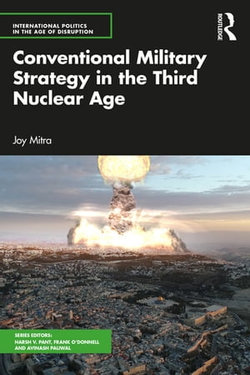This volume delves into the way conventional deterrence operates between nuclear-armed states in the third nuclear age. Unlike the first and second ages the advent of this new age has witnessed greater strain on the principles of mutual vulnerability and survivability that may result in increased risks of advertent or inadvertent escalation and horizontal nuclear proliferation.
The book looks at the sum of three key simultaneous developments in the third nuclear age that merit attention. These include the emergence of asymmetric strategies, the introduction of unmanned platforms and the expansion of nuclear arsenals. The volume discusses how these concurrent developments might shape the practice of conventional deterrence and provides useful insights into conventional military dynamics, not just among the current nuclear dyads but also ones that may emerge in future. It seeks answers to several key issues in state security not limited to:
- What purpose and scope does the conventional military instrument have in a state’s overall military strategy versus other nuclear-armed states?
- If mutual vulnerability and deterrence are the frameworks, why did the prospect of escalation appear in the first place?
- What are the trends — political, doctrinal, or technological — that augment or diminish conventional and nuclear interface?
With insights on military crises that have witnessed participation from nuclear-armed states like the United States, Russia, China, Pakistan, and India this book will especially be of interest to scholars and researchers working in the areas of security and deterrence studies, defence and strategic studies, peace and conflict studies, and foreign policy. It will also appeal to policymakers, career bureaucrats, security and defense practitioners, and professionals working with think tanks and embassies.



Share This eBook: